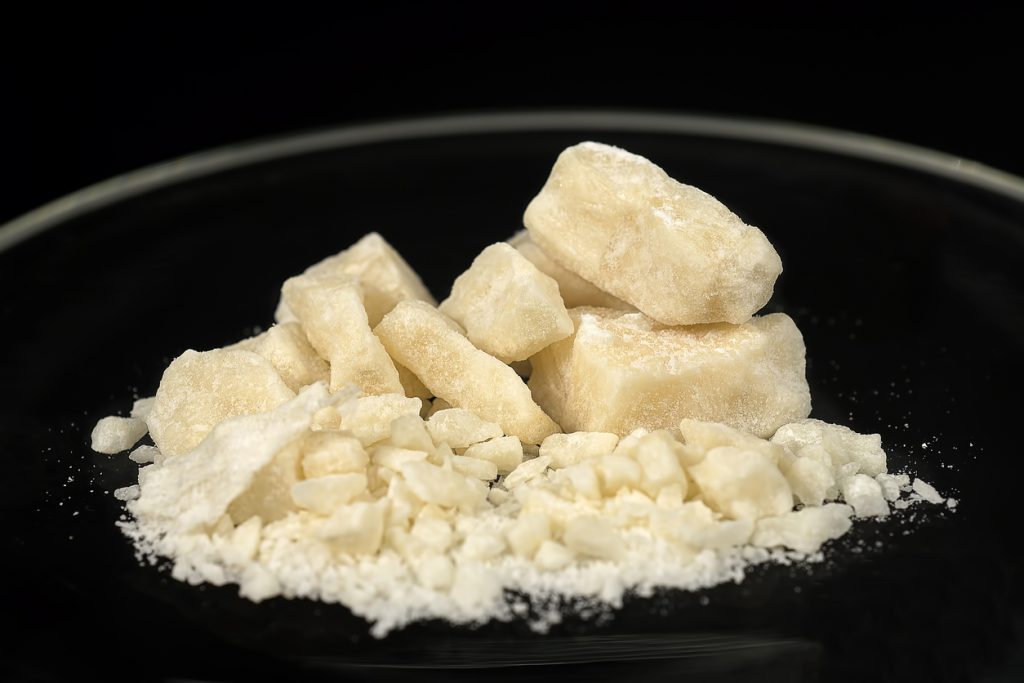
18 Jun Why The 18:1 Powder to Crack Cocaine Ratio is Still Unfair
To lessen the mass incarceration problem, criminal justice reform advocates want to end mandatory minimums and shorten sentences for non-violent crimes. One example of non-violent crimes is crime involving the possession, distribution and importing of drugs. For such crimes, the Fair Sentencing Act (FSA) was introduced to determine charges for crack and powder cocaine. In the FSA, it uses a 18:1 ratio for crack and powder cocaine, where 18 grams of powder cocaine or 1 gram of crack cocaine may result in statutory penalties. But, it does not remedy significant racial disparities in arrests and sentencing from previous laws. Although the FSA has a much lower ratio than the act it replaced, reducing it further or eliminating it altogether could end the racial disparity in sentencing.
The Anti-Drug Abuse Act of 1986 aimed to stop illegal trade.
The Anti-Drug Abuse Act of 1986 is a product of the War on Drugs. President Richard Nixon spearheaded the War on Drugs, starting in June 1971. During this time, Nixon expanded control of federal drug control agencies. Nixon also increased punitive measures for drug-related crimes. Some examples of those punitive measures are mandatory sentencing and longer sentences.
The purpose of the War on Drugs was to stop the distribution, trade and selling of illegal substances. Some arguments claim that the campaign wanted to target marginalized communities. This theory arose after an interview with John Elrichman. Elrichman was one of Nixon’s advisors during Watergate. In the interview, he claimed the War on Drugs was to target the political left and Black communities. Others say that was not a motivation, but there was a political advantage for Nixon by using the campaign.
The Anti-Drug Abuse Act of 1986 targeted cocaine, unlike other policies which targeted cannabis and psychedelics. The purpose of the act was to resolve the “crack epidemic” that began in 1984. The crack epidemic was a term used to describe the sudden increase in the drug’s presence in drug-related crimes. The act established a 100:1 ratio for powder to crack cocaine. The ratio was a way to set a standard for automatic mandatory minimum prison sentences. So, 100 grams of powder cocaine or 1 gram of crack cocaine could send someone to prison for a mandatory minimum. Lawmakers’ argument for setting the ratio this way was that people believed that crack cocaine was more dangerous than powder cocaine.

But the act ended up starting increases with racial disparity in arrests.
Whether the War on Drugs was a sociopolitical attack on marginalized groups or meant to end dangerous drug use, its impacts were clear. Black communities were significantly more affected by the 100:1 ratio than other communities.
In 1986, Black communities received 11% longer sentences than non-marginalized groups. Four years later, that number jumped to 49 percent higher for Black individuals over others. Further, there was an 800% increase in Black women incarcerated over those same four years. This is in comparison to the 400% among women from other racial backgrounds. Yet, 66% of crack users are White or Hispanic. So, Black communities faced charges and arrests more often and for longer than other groups but used it at around the same rate.
The Fair Sentencing Act is the beginning of a remedy.
One of the first steps to help remedy the racial disparities was the Fair Sentencing Act (FSA) in 2010. With FSA, the ratio of 100:1 dropped to 18:1. This means that for every 18 grams of powder cocaine or 1 gram of crack cocaine, one may face statutory penalties. FSA also rid of the mandatory minimums attached to simple possession. Another provision added in 2011 is that it would apply to those incarcerated before the act was law.
The United States Sentencing Commission (USSC) conducted a report on the FSA’s impact. Their findings show that the FSA had positive impacts on federal prison populations. First, FSA shortened the sentences of 5,984 offenders by 2015. The average sentence was around 71 months for shortened sentences, compared to the 101 month average of those pre-FSA.
The USSC’s second finding is about FSA applying to those incarcerated before the act. This means that the act applies to those who were subject to the consequences under the Anti-Drug Abuse Act of 1986. By December 2014, FSA reduced the sentences of another 6,880 incarcerated persons. These two impacts help lessen the mass incarceration problem. These also could provide possible opportunities for resources to be more spread among those who remain incarcerated.

Yet, the FSA was still not enough to solve the original issues.
Despite reduction in prison populations, the FSA does not fix the original problems. As mentioned, the reason the original ratio was 100:1 is because people believed crack is more dangerous than powder cocaine. Yet, this is not true. In fact, the drugs are almost chemical identicals and have no pharmacological difference. The main difference is how people take the substances. So, when looking at the 18:1 ratio for powder to crack cocaine, the law is punishing crack much more harshly than its chemical counterpart.
But, even though the substances are the same, crack specifically popped up in lower-income areas during the crack epidemic. Black communities were in lower socioeconomic communities because of discrimination from real estate and government policies. So, this added to why there was racial disparity in arrests and sentencing for Black individuals versus others. But, the driving factor for maintaining or increasing racial disparities is the 18:1 ratio. Black communities face greater arrests and sentences for a substance that is the same as another, yet need much more to face the same charges.
The EQUAL Act may help.
Policymakers recognize the discrepancies with the current 18:1 ratio for powder to crack cocaine ratio as well. Senator Cory A. Booker (D-NJ) introduced the Eliminating a Quantifiably Unjust Application of the Law (EQUAL) Act on Jan. 28, 2021. The bill wants to make the crack to powder cocaine ratio 1:1. Further, the bill allows for those incarcerated to request for a reduced sentence. The same bill is also in the House of Representatives as H.R. 1693 and sponsored by Representative Hakeem F. Jeffries (D-NY-8). The bill has bipartisan support in the Senate and the House of Representatives. If the bills pass, they could lower discrimination in drug-related arrests and sentences. It could also help lessen the mass incarceration problem.

